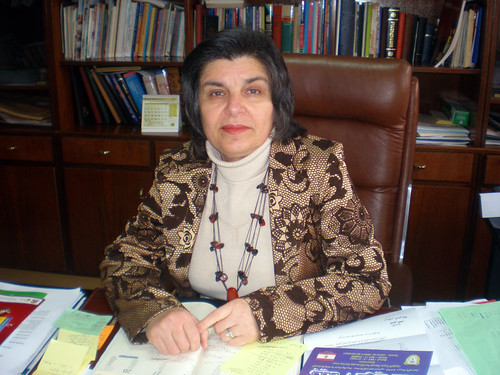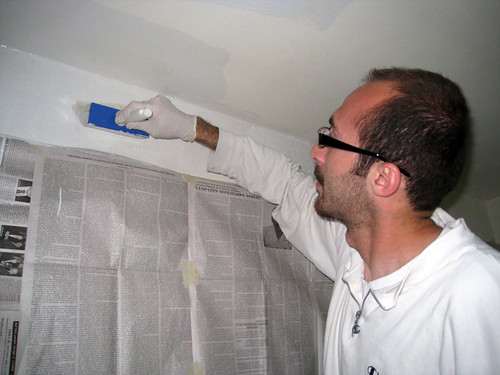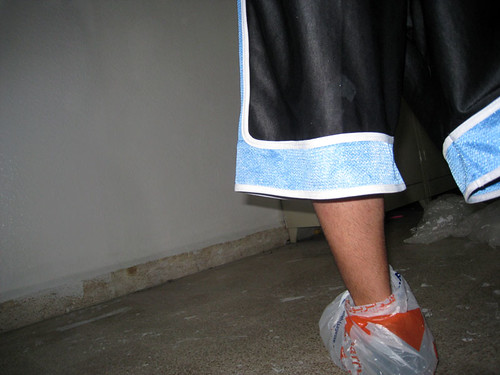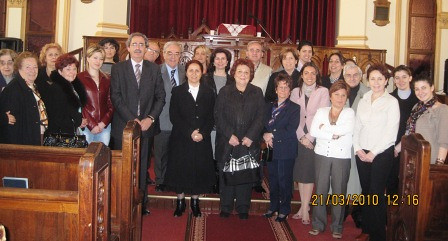An interview with Mrs. Seta Karagoezian, the principal of the Armenian Evangelical P. & E. Torosian School. The interview is conducted by Mr. Raffi Chilingirian, the Editor in Chief of www.chanitz.org.

RC - Can you tell us about the new system that you started implementing during the start of the 2009-2010 academic year in the Armenian Evangelical P. & E. Torosian School?
SK - Arm. Evang. Torosian School implemented a new system at the current academic year 2009-2010, in the KG & Elementary classes.
The system is a disciplinary one & helps improve class management.
The aim of it is to have a positive inforcement on students & at the same time educate them to be responsible for their behaviour.
The system has it's rules which are made clear to students in each class at the beginning of the school year, Then they're posted in each class clearly.
The system deals with both positive & negative behaviour.
In class, any positive act or an acheivement ( not necessarily a high grade) of a student is rewarded by a gift from the surprise - box.
On the other hand if a student breaks a rule , the teacher reminds him twice orally. If the student continues to do so , the teacher sticks a paper on his desk as a close reminder. If he still goes on , he bears the consequence.
In this way the student becomes responsible to control himself with the help of the teacher, hence concentrates on his duties.
RC - Why did you choose to implement this system?
SK - Class management & class discipline are the pillars of group education.
In the new generation , active & hyper-active students are increasing in number. In a group of 25 or more they make a great difference in the class management.
The aim of establishing such a system is having a uniformity in all classes with a positive approach. And educating the children to be responsible for their behaviour was the compulsory force to implement the above system.
Teachers attended 2 one-day workshops to study & master this system & then implement it in their classes.
RC - What are the initial results of this system on the students and on the teachers?
SK - Having evaluated the system after 2 months, revealed that in most of the classes teachers were happy. Their tension & anger was decreased.
Students disciplined themselves just to get a gift from the surprise-box.
Surprise-box worked wonders in some cases.
Few students though had to bear the consequences.
RC - What do the parents think about this new system?
SK - At the beginning of the year, parents were informed of the new system. They expressed their gratitude.
Some of them cooperated very effectively & the results were obviously very positive on their children. Others who couldn't cooperate got a lesser share of benefit.


















Photos provided by Mr. Manoug Ibitian

RC - Can you tell us about the new system that you started implementing during the start of the 2009-2010 academic year in the Armenian Evangelical P. & E. Torosian School?
SK - Arm. Evang. Torosian School implemented a new system at the current academic year 2009-2010, in the KG & Elementary classes.
The system is a disciplinary one & helps improve class management.
The aim of it is to have a positive inforcement on students & at the same time educate them to be responsible for their behaviour.
The system has it's rules which are made clear to students in each class at the beginning of the school year, Then they're posted in each class clearly.
The system deals with both positive & negative behaviour.
In class, any positive act or an acheivement ( not necessarily a high grade) of a student is rewarded by a gift from the surprise - box.
On the other hand if a student breaks a rule , the teacher reminds him twice orally. If the student continues to do so , the teacher sticks a paper on his desk as a close reminder. If he still goes on , he bears the consequence.
In this way the student becomes responsible to control himself with the help of the teacher, hence concentrates on his duties.
RC - Why did you choose to implement this system?
SK - Class management & class discipline are the pillars of group education.
In the new generation , active & hyper-active students are increasing in number. In a group of 25 or more they make a great difference in the class management.
The aim of establishing such a system is having a uniformity in all classes with a positive approach. And educating the children to be responsible for their behaviour was the compulsory force to implement the above system.
Teachers attended 2 one-day workshops to study & master this system & then implement it in their classes.
RC - What are the initial results of this system on the students and on the teachers?
SK - Having evaluated the system after 2 months, revealed that in most of the classes teachers were happy. Their tension & anger was decreased.
Students disciplined themselves just to get a gift from the surprise-box.
Surprise-box worked wonders in some cases.
Few students though had to bear the consequences.
RC - What do the parents think about this new system?
SK - At the beginning of the year, parents were informed of the new system. They expressed their gratitude.
Some of them cooperated very effectively & the results were obviously very positive on their children. Others who couldn't cooperate got a lesser share of benefit.


















Photos provided by Mr. Manoug Ibitian



































